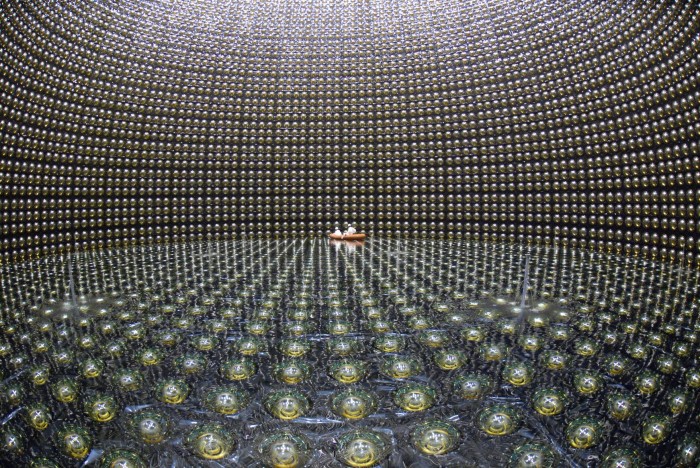www.windows2universe.org/sun/Solar_interior/Nuclear_Reactions/Neutrinos/detectors.html
Neutrino interactions with matter are extremely rare, so detecting a neutrino is very hard.
Neutrino detectors are typically large, underground tanks filled with a fluid that reacts to the passage of neutrinos. In neutrino detection, bigger is better! The bigger the tank (detector), the more neutrinos it will detect.





I dunno if thats the one from Sudbury, but we have a massive neutrino observatory. Its stationed wayyyyy underground in one of our mines.
I’ve been to SNOLab (the one in Sudbury). I don’t think it’s the same one, mostly because the detector there is a sphere, that one looks more like a dome. with a flat bottom. Very cool place though, 2km straight down on an elevator, and then another 1km walk to the actual lab. It’s the deepest lab in the world if I’m not mistaken.
en.wikipedia.org/wiki/Super_Kamiokande
I hope my job one day involves taking a boat out into an artificial lake of heavy water filled with photoreceptors.
That’s one hell of a lot of work just to make a breakfast cereal.
I bet these things are a scam of some sort. The “neutrinos” they detect are prolly just random malfunctions in the equipment or atomic decay or something similar. Good enough for a billion dollar grant though. Cuz spearmints in underground caves? Hell, that’s just GOT to be scientific.